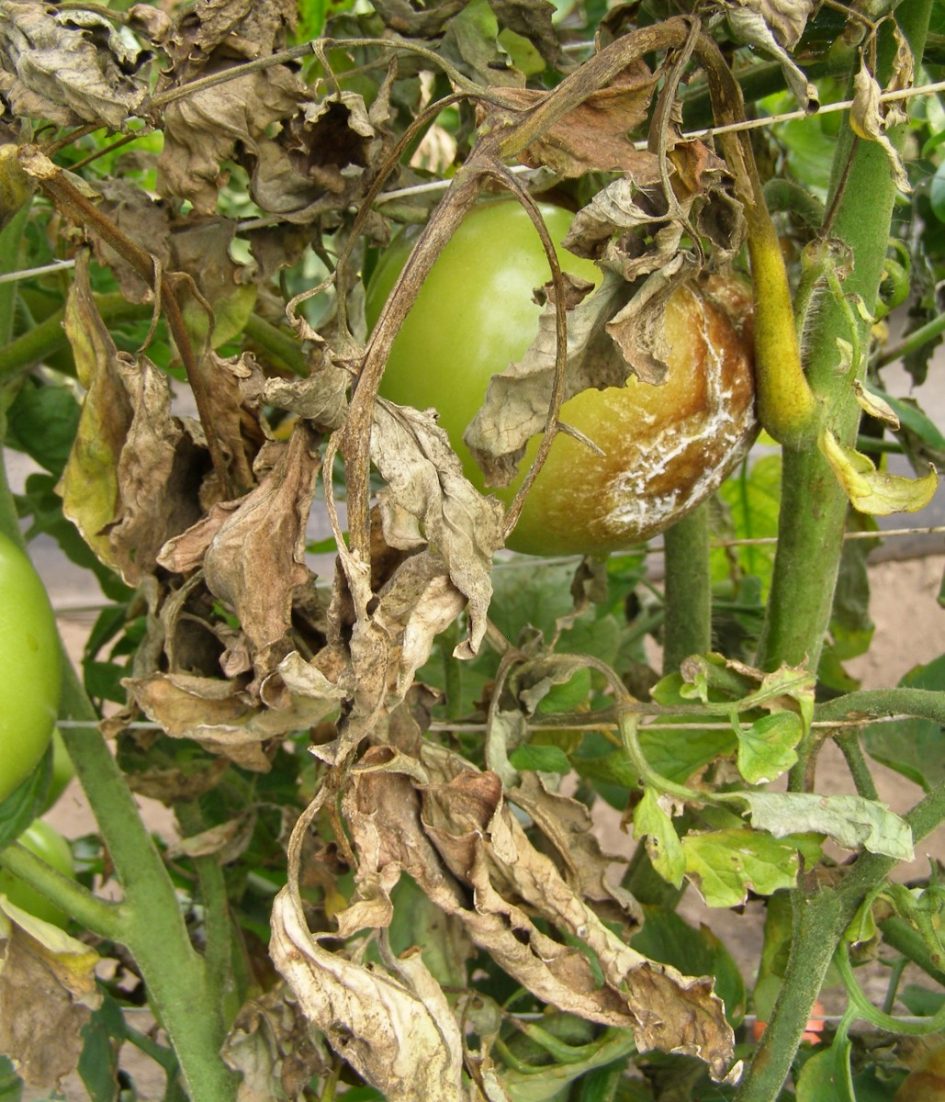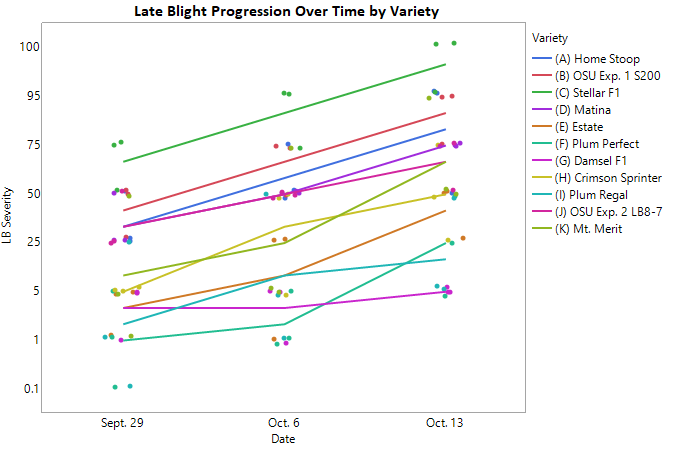We first spotted late blight on September 22nd, so the first late blight evaluation was one week later on September 29. We used the modified late blight rating scale provided in the NOVIC protocol, which a 9-point scale referencing the percentage of tissue infected. We completed 3 late blight evaluations before we got the first frost of the season.
Because the late blight scale reflects a percentage, we are able to transform the percentages first to proportions and then using arcsine. Arcsine transformations have remained the field standard for years, but more recently statisticians have challenged how accurate the arcsine transformation really is. There is a growing push for using logit-link transformations, which I also used in the percent of unmarketable harvest analysis. These transformations stretch out observations more evenly, particularly when percentages are near 0 and 100 (the extremes) and/or you have a bimodal distribution. Sadly, neither of these transformation produced data that showed to be normally distributed. This means I have to use non-parametric Pearson’s chi square test rather than ANOVA. The test revealed significant differences (χ2(70) = 115.75, p < .001) attributed to plant variety. Analysis of late blight severity by field location did not reveal significant differences.
Damsel, Plum Perfect, Plum Regal and Estate were the best performers against late blight here in western Washington. We pruned Estate like it was an indeterminate variety, and this was a mistake. We think this one needs to be retrialed. Looking at the puny yield on Estate, if it does have late blight resistance it’s not productive enough to warrant growing. Plum Regal and Plum Perfect are both determinate, plum types, so while identifying the genetic sources of resistance is necessary to breeding efforts, they don’t suit NOVIC’s tomato goals. Damsel was by far the most impressive! Even by the third late blight evaluation, Damsel was only 5% affected. It should be noted that while foliage was vibrant green and lush, late blight/secondary infections were apparent on a large number of fruits.
As a seed saver, I do wish Damsel was open-pollinated. This would allow for annual growing and selecting the best individuals as they compete with the unique and dynamic pathogen/pest populations at each growing site. But I had the opportunity to meet one of the Damsel breeders (John Hart) at the Culinary Breeding Network’s Variety Showcase in Portland, and he is freaking awesome! If I have to buy hybrid seed every year, I’m glad I’d be buying it from people like him and his business partner, Jason Cavatorta. I may be a little biased, however, because he said this blog was the “best thing NOVIC has ever put out.” That’s a huge compliment, and I told him to continue repeating it until I find a job now that I have a degree 😉
Since the late blight evaluations are done, so is the trial! Almost 7 months to the day of seeding. Below is a copy of the summary data table (modeled after the UW-Madison report from 2016). Enjoy!



Leave a Reply